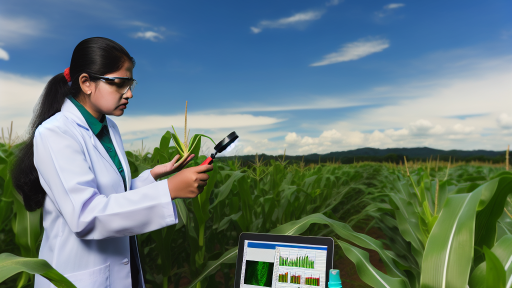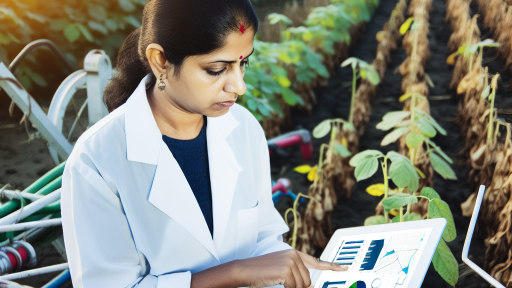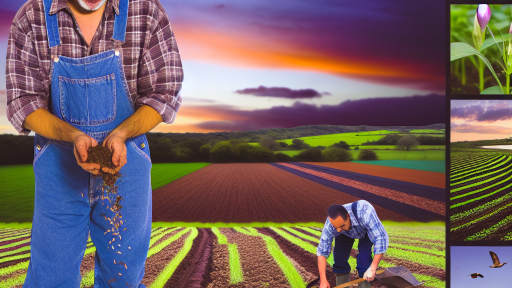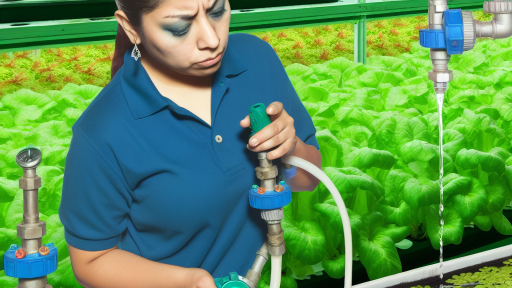Understanding the Importance of Fresh Produce Storage
Preserving Nutritional Value
Fresh produce contains essential vitamins and minerals.
Proper storage maintains its nutritional quality over time.
This approach ensures that consumers receive maximum health benefits.
Reducing Food Waste
Efficient storage solutions can significantly cut down food waste.
When produce lasts longer, fewer items are discarded.
As a result, both households and retailers save money.
Enhancing Flavor and Freshness
Proper storage techniques preserve the flavor of fruits and vegetables.
Fresh produce retains its texture and crispness with appropriate care.
This enhances the overall eating experience for consumers.
Extending Shelf Life
Effective storage practices can prolong the shelf life of fresh produce.
Utilizing the right environment slows down spoilage processes.
This ensures that produce remains viable for more extended periods.
Meeting Consumer Demands
Today’s consumers expect fresh and high-quality products.
Retailers can meet these expectations through effective storage solutions.
Additionally, this approach strengthens brand reputation and customer loyalty.
Transform Your Agribusiness
Unlock your farm's potential with expert advice tailored to your needs. Get actionable steps that drive real results.
Get StartedSupporting Sustainable Practices
Efficient storage reduces resource usage and waste generation.
Implementing sustainable storage methods promotes eco-friendly practices.
This supports broader goals of environmental sustainability and conservation.
Optimal Temperature Ranges for Various Types of Produce
Introduction to Temperature Management
Proper temperature management extends the life of fresh produce.
Fruits and vegetables thrive under specific temperature conditions.
This section discusses optimal temperature ranges for different types of produce.
Temperature Guidelines for Common Fruits
Apples should be stored at 30 to 35 degrees Fahrenheit.
Oranges benefit from temperatures between 45 and 50 degrees Fahrenheit.
Bananas prefer warmer conditions, ideally around 56 to 58 degrees Fahrenheit.
Melons thrive best at temperatures ranging from 45 to 55 degrees Fahrenheit.
Optimal Temperature for Leafy Greens
Leafy greens, such as spinach and lettuce, require cooler temperatures.
Store them between 32 and 36 degrees Fahrenheit to maintain freshness.
Additionally, higher humidity levels support leafy green preservation.
Root Vegetables and Their Needs
Carrots thrive in temperatures of 32 to 36 degrees Fahrenheit.
Potatoes do best at temperatures between 45 and 50 degrees Fahrenheit.
Beets and turnips also prefer storage conditions around 32 to 36 degrees Fahrenheit.
Temperature Considerations for Berries
Berries should generally be kept between 30 and 32 degrees Fahrenheit.
Strawberries, raspberries, and blueberries require careful temperature control.
Additionally, avoid washing berries until just before eating to prevent spoilage.
Importance of Temperature Management
Maintaining the right temperatures optimizes the shelf life of produce.
By knowing the specific needs for different types of produce, you can minimize waste.
Ultimately, effective storage solutions contribute to better food quality.
Common Storage Solutions: Refrigeration vs. Freezing
Refrigeration
Refrigeration slows down the ripening process of fresh produce.
This method maintains quality without drastically altering texture or flavor.
Showcase Your Farming Business
Publish your professional farming services profile on our blog for a one-time fee of $200 and reach a dedicated audience of farmers and agribusiness owners.
Publish Your ProfileMost fruits and vegetables benefit from refrigeration.
For instance, berries and leafy greens thrive in cold temperatures.
When correctly stored, refrigerated produce can last for days or even weeks.
However, some items do not fare well in chilled environments.
Bananas and tomatoes, for example, lose flavor when refrigerated.
It’s important to know which produce can tolerate cooler conditions.
Freezing
Freezing is another method for long-term storage of fresh produce.
This option halts spoilage by maintaining low temperatures.
Typically, vegetables such as peas and corn freeze well.
However, freezing can lead to changes in texture.
For this reason, blanching vegetables before freezing is recommended.
Blanching preserves color, flavor, and nutrients during freezing.
For fruits, frozen options tend to work best in baking or cooking.
Always use airtight containers to prevent freezer burn.
Comparative Overview
Choosing between refrigeration and freezing depends on storage goals.
If immediate consumption is intended, refrigeration suffices.
Conversely, for long-term preservation, freezing is ideal.
Each method also impacts flavor and texture differently.
Additionally, the type of produce influences storage decisions.
Ultimately, understanding these differences ensures optimal results.
Uncover the Details: Integrated Pest Management Forecasting Techniques
The Role of Humidity in Fresh Produce Preservation
Understanding Humidity’s Influence
Humidity plays a critical role in preserving fresh produce.
It affects the moisture content within fruits and vegetables.
Too much humidity can lead to mold and decay.
Conversely, low humidity causes dehydration and shriveling.
Finding the right balance is essential for longevity.
Optimal Humidity Levels
Most fresh produce thrives at 85% to 95% humidity.
Leafy greens like lettuce require higher humidity for freshness.
Fruits such as apples can tolerate slightly lower humidity.
Proper humidity helps maintain crispness and flavor.
Methods to Control Humidity
Proper storage containers can significantly regulate humidity levels.
Consider using breathable bags for leafy vegetables.
Additionally, place a damp paper towel in storage bins.
This method can help retain moisture effectively.
Avoid tightly sealing containers, as airflow is necessary.
Monitoring Humidity Levels
Investing in a hygrometer can assist in monitoring humidity.
Regular checks help you maintain optimal storage conditions.
Be mindful of your storage environment’s temperature as well.
Higher temperatures can increase the risk of dehydration.
Impact on Shelf Life
Maintaining the right humidity directly influences shelf life.
Showcase Your Farming Business
Publish your professional farming services profile on our blog for a one-time fee of $200 and reach a dedicated audience of farmers and agribusiness owners.
Publish Your ProfileProperly stored produce can last weeks longer than improperly stored items.
This can lead to reduced food waste and cost savings.
Businesses can benefit from extended product freshness as well.
Maintaining Optimal Humidity for Fresh Produce
In managing humidity, you can enhance freshness and quality.
Uncover the Details: Leveraging Big Data For Crop Management Success
Best Practices for Packing and Storing Produce
Understanding Storage Conditions
Proper storage conditions are crucial for extending the shelf life of fresh produce.
Temperature significantly influences the quality and longevity of fruits and vegetables.
Most produce prefers cool, dark, and humid environments to maintain freshness.
Moreover, ethylene gas affects ripening, so store ethylene-sensitive plants away from ethylene-producing fruits.
Choosing Appropriate Packaging
Using the right packaging helps protect produce during transport and storage.
Ventilated containers allow for aeration, preventing moisture accumulation.
Opt for breathable bags or crates that facilitate air circulation.
Additionally, avoid wrapping fruits tightly, as this leads to deterioration.
Organizing Your Storage Area
Keep your storage area organized to make the most of available space.
Place older stock in front of newer arrivals to promote first-in-first-out usage.
Group similar types of produce together based on their storage needs.
Consider using shelves or bins to maximize vertical space efficiently.
Monitoring Produce Quality
Regularly check stored produce for any signs of spoilage.
Remove spoiled items immediately to prevent further contamination.
Inspect produce for texture and color changes that indicate freshness loss.
Ensure that produce with different densities is stored separately to avoid bruising.
Utilizing Temperature Controls
Employ temperature controls to maintain optimal conditions throughout storage.
Refrigerate leafy greens and berries to extend their lifespan significantly.
On the other hand, keep root vegetables in warmer, darker locations.
Maintain consistent temperatures to prevent shock and stress on produce.
Educating Staff on Best Practices
Training staff on best packing and storage practices ensures consistency.
Implement regular workshops to update knowledge about fresh produce handling.
Share tips on identifying quality produce and managing storage effectively.
Encourage teamwork to foster a culture of care for all stored items.
You Might Also Like: Future Trends In Crop Monitoring And Analytics
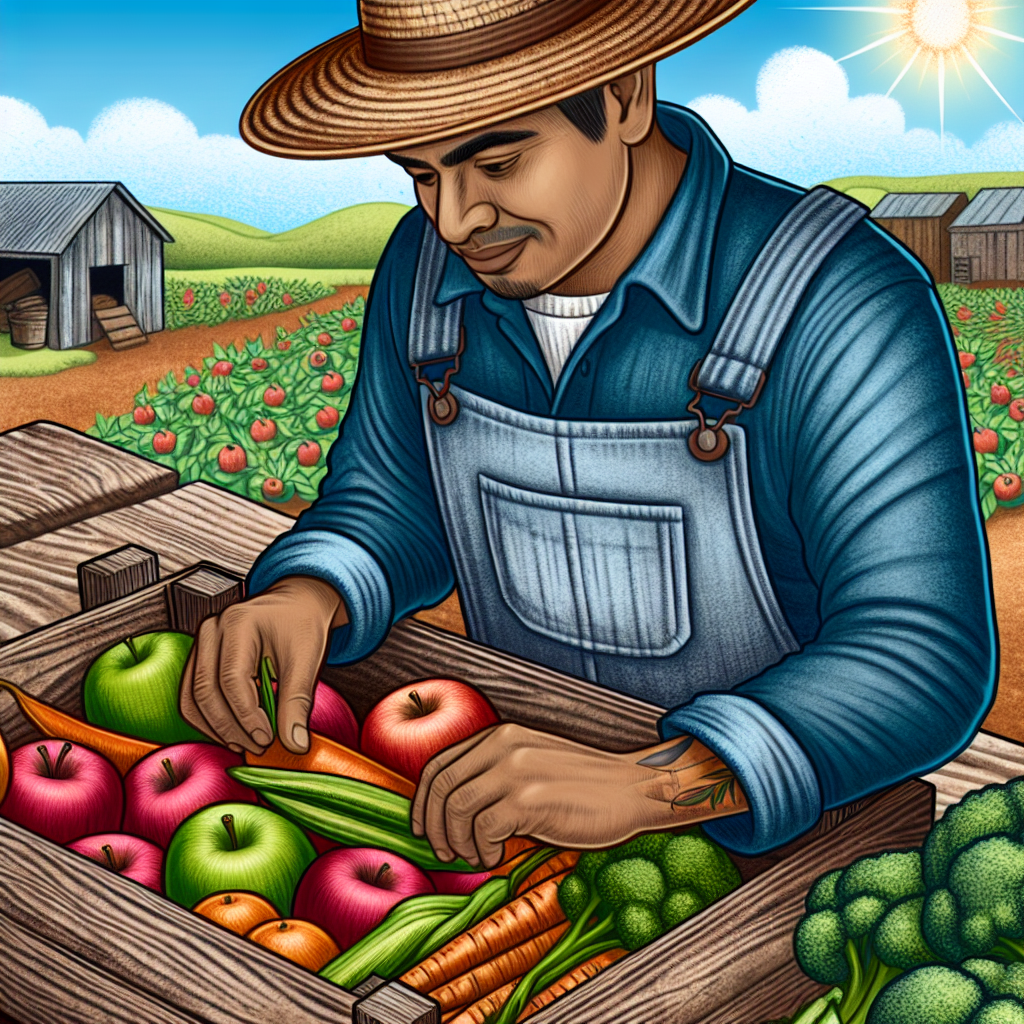
Innovative Storage Technologies
Smart Refrigerators
Smart refrigerators revolutionize the way we store fresh produce.
They utilize advanced technology to monitor and control temperature settings.
These devices alert users about food expiration dates.
Furthermore, they can suggest recipes based on stored ingredients.
As a result, food waste diminishes significantly.
Temperature and Humidity Control
Maintaining the right temperature is crucial for produce longevity.
Many innovative storage solutions offer precise temperature control features.
Additionally, humidity control prevents wilting and spoilage.
This ensures fruits and vegetables retain their freshness for longer.
Active Monitoring Systems
Active monitoring systems keep track of ideal storage conditions.
Showcase Your Farming Business
Publish your professional farming services profile on our blog for a one-time fee of $200 and reach a dedicated audience of farmers and agribusiness owners.
Publish Your ProfileThey adjust settings automatically based on produce type and quantity.
With this technology, users achieve optimal freshness effortlessly.
Mobile Applications
Mobile applications enhance the functionality of smart refrigerators.
They allow users to manage their inventory remotely.
Users can receive notifications when produce is nearing expiration.
This level of engagement leads to improved food management practices.
Beyond Smart Refrigerators
Vacuum Sealers
Vacuum sealers extend the shelf life of fresh produce significantly.
They remove air from packaging, slowing down spoilage processes.
Additionally, vacuum sealing is ideal for meal prep and storage.
As a result, users minimize food waste and save money.
Controlled Atmosphere Storage
Controlled atmosphere storage is essential for large-scale produce storage.
This technology adjusts oxygen and carbon dioxide levels.
Such environments inhibit ripening and decay.
Thus, produce retains its quality during transport and storage.
Regenerative Cooling Systems
Regenerative cooling systems offer energy-efficient storage solutions.
They use advanced thermodynamic cycles to maintain desired temperatures.
These systems are eco-friendly and reduce operational costs.
Smart Shelving Units
Smart shelving units enhance organization within storage spaces.
These units remind users when to restock or rotate produce.
In addition, they can track shelf life for multiple items simultaneously.
Explore Further: Preventing Post-Harvest Losses on the Farm
How to Reduce Food Waste through Proper Storage Techniques
Understanding Food Storage Basics
Food storage plays a vital role in reducing waste.
Proper techniques can extend the life of fresh produce.
Understanding temperature and humidity is essential.
These factors significantly affect freshness and spoilage.
Optimal Storage Conditions for Different Produce
Different fruits and vegetables require specific conditions.
For example, apples keep well in cool, dry places.
Conversely, bananas fare better at room temperature.
Storing tomatoes in the fridge can alter their flavor.
Knowing where to store each type helps maintain quality.
Utilizing Airtight Containers
Airtight containers prevent moisture loss and exposure.
They also protect produce from pests and odors.
Choose containers made of glass or food-safe plastic.
Label containers with expiration dates for easy tracking.
Regularly Check and Rotate Produce
Regular inspections of stored produce are crucial.
Remove any spoiled items immediately to prevent spreading.
Rotate items using the first in, first out method.
This method helps ensure older items get used first.
Understanding Ethylene Gas
Ethylene is a natural gas emitted by some fruits.
This gas can speed up ripening and spoilage.
Showcase Your Farming Business
Publish your professional farming services profile on our blog for a one-time fee of $200 and reach a dedicated audience of farmers and agribusiness owners.
Publish Your ProfileKeep ethylene-producing fruits away from sensitive veggies.
For instance, store avocados separately from leafy greens.
Smart Freezing Techniques
Freezing extends the shelf life of many fruits and veggies.
Blanching before freezing helps preserve flavor and color.
Pack items in airtight bags to minimize freezer burn.
Label them with dates to track freshness.
Creating a Smart Storage Plan
A storage plan helps streamline your food management.
Designate separate areas for different produce categories.
Clearly label each section for easy access.
This organization prevents confusion and ensures efficiency.
Involving the Whole Family
Involve family members in storage practices.
Teach children about proper food management techniques.
Encourage everyone to participate in meal planning.
This creates awareness about food waste and its reduction.
Choosing the Right Containers: Materials that Preserve Freshness
Importance of Container Materials
Choosing the right container material is essential for preserving the freshness of produce.
Different materials affect how fruits and vegetables store.
Thus, understanding the properties of each material helps in making informed choices.
Plastic Containers
Plastic containers are lightweight and versatile.
Many plastics are designed specifically for food storage.
They can create an airtight seal, reducing moisture and airflow.
Look for BPA-free options to ensure safety.
Types of Plastic Containers
- Hard plastic containers offer durability.
- Flexible plastic bags are lightweight and space-saving.
- Reusable produce bags are excellent for bulk items.
Glass Containers
Glass containers provide a non-reactive storage solution.
They do not leach chemicals into food, maintaining freshness.
Additionally, glass containers are visually appealing.
They allow you to see the contents, encouraging healthy eating.
Advantages of Glass
- Glass is easily cleanable and microwave-safe.
- They retain flavors and prevent odors.
- Glass containers are often freezer-safe.
Metal Containers
Metal containers are strong and long-lasting.
They provide excellent protection against light and air.
However, avoid using them for acidic foods.
Acids can react with the metal and alter flavors.
Best Practices with Metal
- Use stainless steel or aluminum for optimal safety.
- Consider lined containers to prevent reactions.
- Keep containers dry to avoid rust.
Natural Materials
Materials like bamboo and ceramics are eco-friendly choices.
These containers allow for good air circulation.
Bamboo containers can help to regulate humidity levels.
However, they might require more care in cleaning.
Utilizing Natural Containers
- Choose ceramic for a decorative touch.
- Use bamboo for sustainable storage options.
- Ensure proper drying after washing to prevent mold.
Impact of Container Choice on Freshness
The choice of storage containers influences freshness significantly.
Opt for materials that suit your lifestyle and preserve quality.
Feel free to mix and match container types based on your needs.
Additional Resources
Reducing food loss and waste for climate outcomes: Insights from …

